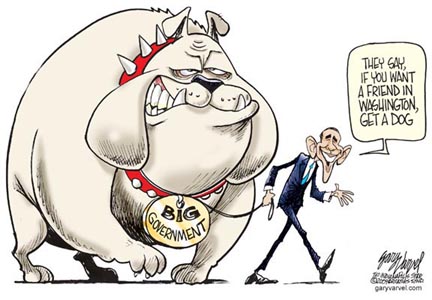by Michael Barone • Washington Examiner
 “Twentieth-century technology,” writes economic historian Joel Mokyr in the Manhattan Institute’s excellent City Journal, “was primarily about ‘large’ things.”
“Twentieth-century technology,” writes economic historian Joel Mokyr in the Manhattan Institute’s excellent City Journal, “was primarily about ‘large’ things.”
Large in physical size, that is. Mokyr’s examples include the diesel engine and the gas turbine, shipping containers, communications satellites launched by giant rockets, oil-drilling platforms, massive power stations, giant steel mills and huge airplanes.
Most are familiar sights today, but if we try to see them with the eyes of someone in 1914, they are awe-inspiring. This summer, I drove past the ruins of Henry Ford’s Highland Park plant, the largest manufacturing plant in the world when it opened in 1910. There, Ford set up the first auto assembly line and in 1914, the same year Europe went to war, started paying his workers $5 a day.
Three years later, the year the United States entered what was called the Great War, Ford started building the even larger Rouge plant in Dearborn, covering 960 acres — one-and-a-half square miles — with 100 miles of internal railroad track. More than 100,000 men worked there daily at its peak. A drive around the perimeter of the Rouge plant puts five miles on your odometer.
To the men and women of 1914, these plants, like the giant steel factories along Cleveland’s Cuyahoga River and Pittsburgh’s Monongahela, must have been breathtaking. Most people then grew up on farms where the highest structure around was a church steeple.
Breathtaking too was the audacity of the entrepreneurs and capitalists who raised the money and designed these behemoths and many others.
Consider what immigrants, many on ocean liners among the largest ever built, saw as they entered New York Harbor in 1914. Giant ships sailing past the Statue of Liberty toward the skyscrapers of lower Manhattan, the offices of John D. Rockefeller at 26 Broadway and J.P. Morgan at 23 Wall Street, and behind them the gleaming new 60-story Gothic Woolworth Building, the tallest building in the world when it was completed in 1913 and until the Chrysler Building rose in 1930.
“Large” technology tended to encourage large bureaucracies and large government. You needed bureaucratic organization and centralized control to manage those 100,000 workers at the Rouge and, eventually, big unions as well.
In 1913 and 1914 Congress created the Federal Reserve and the Federal Trade Commission and passed the Clayton Antitrust Act. It seemed natural when so much wealth was so visibly accumulated that government and labor unions should have some countervailing power.
Large technology also meant large armies — and enormous casualties in war. Some 116,000 Americans died in World War I, far more than the less than 10,000 in Iraq and Afghanistan combined. Other nations’ (approximate) death tolls were much higher: 800,000 British, 1.3 million French, 1.8 million Germans, 1.3 million Austro-Hungarians and 2 million Russians. On July 1, 1916, the first day of the Battle of the Somme, 19,000 British soldiers died and 41,000 were wounded.
These figures are orders of magnitude larger than the death tolls in recent wars. And so are the sizes of militaries.
Military historian Robert Scales recently noted how General George Patton’s mechanized war doctrine, waged with enormous forces, culminated in the march to Baghdad in 2003. Enemies adapted, however, and Patton’s mass armies have been replaced by special operations forces, pioneered by General Stanley McChrystal — “small units of superbly selected, educated, led and bonded soldiers.”
Civilian technology, Joel Mokyr notes, has also gone “small” — nanotechnology, genetic engineering, custom-engineered materials, “mass customization” through 3-D printing. If the Rouge plant looming over Dearborn was the iconic symbol of the industrial age, the iconic symbol of our information age is the smartphone in your pocket.
“Large” technology requires the standardization of masses of people, centralized command-and-control, conformity to social norms. Massive work forces and massive armies cannot operate optimally otherwise.
“Small” technology enables individuals to make personal choices, fashion their world to their own dimensions, deploy their own talents and pursue their interests in ways of their own choosing. Standardization yields to customization.
President Obama doesn’t seem to get this. He sees history as a story of progress from minimal government to ever-larger government. He’s only sorry that he hasn’t taken us farther on that track.
But history doesn’t proceed in a straight line; it moves around. “Large” technology made big government seem necessary in 1914. “Small” technology requires something different, something more adaptive today.
. . . . . . . . . . . . . . . . . . . .
Michael Barone is Senior Political Analyst for the Washington Examiner, co-author of The Almanac of American Politics and a contributor to Fox News.